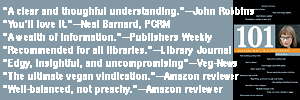




|

DAILY EYEPOPPERS
• HOME [EXCERPT: "We're probably looking at one of the worst spasms of extinction in millions of years, even without climate change," said Lee Hannah, an expert at Conservation International. "But we have it in our ability to do something about it."] Vanishing toads could portend extinction crisis REUTERSMon., Mar 13, 2006 By Alister Doyle, Environment Correspondent Exotic frogs and toads are dying out in the jungles of Latin America, apparent victims of global warming in what might be a harbinger of one of the worst waves of extinction since the dinosaurs. Accelerating extinctions would derail a United Nations goal of "a significant reduction in the current rate of biodiversity loss" by 2010. That target will be reviewed at a U.N. meeting of environment ministers in Curitiba, Brazil, on March 20-31. "We are facing an extinction crisis," said Anne Larigauderie, head of Paris-based Diversitas which promotes research into life on the planet. She estimated the rate of loss of all species was now 10-100 times faster than little-understood rates from fossil records. The task of gauging the exact rate is complicated by the fact that no one knows exactly how many species exist. Many scientists say global warming -- widely blamed on burning fossil fuels in factories, power plants and vehicles --is adding to other human threats including destruction of habitats from expanding cities, deforestation and pollution. For now, amphibians such as frogs, toads, salamanders and newts are on the front-line -- they live both in water and on land and have a porous skin sensitive to changes in temperature and moisture. A skin fungus is also decimating amphibians. In coming decades, threats could widen to creatures ranging from polar bears to tropical butterflies. A few species might benefit, such as forests expanding north to the Arctic. "We're probably looking at one of the worst spasms of extinction in millions of years, even without climate change," said Lee Hannah, an expert at Conservation International. "But we have it in our ability to do something about it." "Many species are already moving right to the brink," said Craig Hilton-Taylor, head of the "Red List" publication of endangered species at the World Conservation Union. GOLDEN TOAD The latest 2004 Red List gives "climate change" alongside "disease" as main factors for the extinction of the Golden Toad of Costa Rica, Ecuador's Jambato Toad and an Ecuadorean toad known as Atelopus Longirostis. "We have never used 'climate change' in previous publications as a cause of extinction," Hilton-Taylor said. "I'm sure it will be used more in future." A study in the journal Nature in January said two-thirds of 110 species of Harlequin frog in central and South America had died out in the past 20 years. It implicated a warming climate in helping spread fungus. In the worst case, some studies say the world could be facing one of the biggest waves of species loss since the dinosaurs were wiped out 65 million years ago. Larigauderie said the U.N. goal of slowing biodiversity loss was impossible. "It's totally unrealistic. We don't know what there is out there and we don't know how it's changing," she said. Overall, the Red List says 844 species have disappeared since 1500, ranging from the dodo to the Tasmanian tiger. In one of the bleakest projections, a 2004 international study said a quarter of all species -- perhaps a million -- could be condemned to extinction by 2050, partly because of a warming climate. "You could argue that climate change is already starting to be on a par with other causes of species loss," said ChrisTaylor, the study's lead author who is a professor of conservation biology at the University of York in England. Species limited to a single mountain-top -- like the Golden Toad -- were unable to escape if it got too hot. In other cases, cities, roads or farmland may block the path of animals and plants moving toward the poles, the study said. CLIMATE REFUGEES Others say the outlook is less grim. "In a lot of cases, species will be able to move toward the poles or find pockets of environments where they can survive," said Paul Leadley, a professor of ecology at the University of Paris. He said an abrupt temperature rise at the end of the last Ice Age 10,000 years ago did not trigger a mass extinction. The head of the U.N.'s climate panel said preserving nature was more than just a question of helping exotic animals and plants to survive. "Human progress has been supported by the healthy continuation of biodiversity," said Rajendra Pachauri, chairmanof the Intergovernmental Panel on Climate Change, the scientific body of about 2,000 scientists that advises the United Nations. "All our food crops, medicines and so many other things that we take for granted in day-to-day living are the result of what we have exploited in the form of nature's bounty," he said. He urged governments to do more to slow climate change. The Kyoto Protocol, the main U.N. plan to curb global warming, obliges about 40 industrial nations to cut emissions of heat-trapping gases by 5.2 percent below 1990 levels by 2008-12. President George W. Bush pulled the United States, the world's top source of emissions, out in 2001. He denouncedKyoto as an economic straitjacket that would cost U.S. jobs and said it wrongly excluded developing nations. Public concern about nature can sometimes produce huge efforts to protect species. In the United States, discovery of the tiny snail darter fish delayed construction of the Tellico Dam on the Little Tennessee River after it was listed as endangered in the 1970s. In other cases, species that held promise have vanished. The tiny Australian Northern Gastric-Brooding Frog had the trick of incubating its young in its stomach by turning off its digestive juices. That could have helped pharmaceutical companies to work out stomach anti-ulcer drugs. Extinct according to the Red List, it has not been seen in the wild since 1985, a victim of habitat loss and disease.
- REUTERS
|